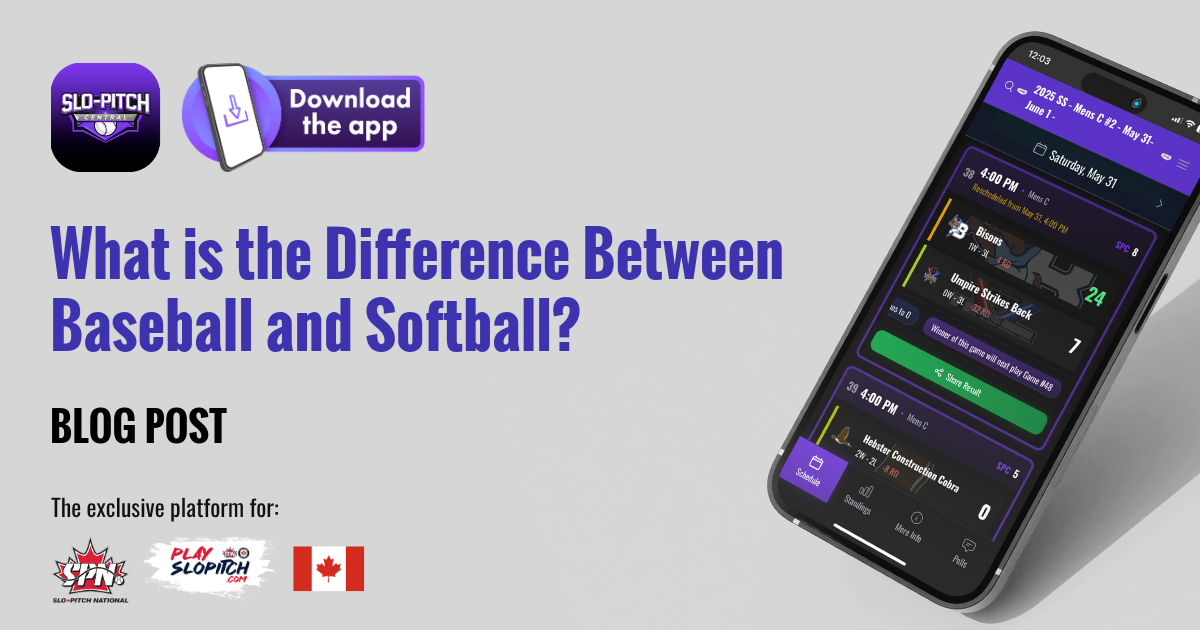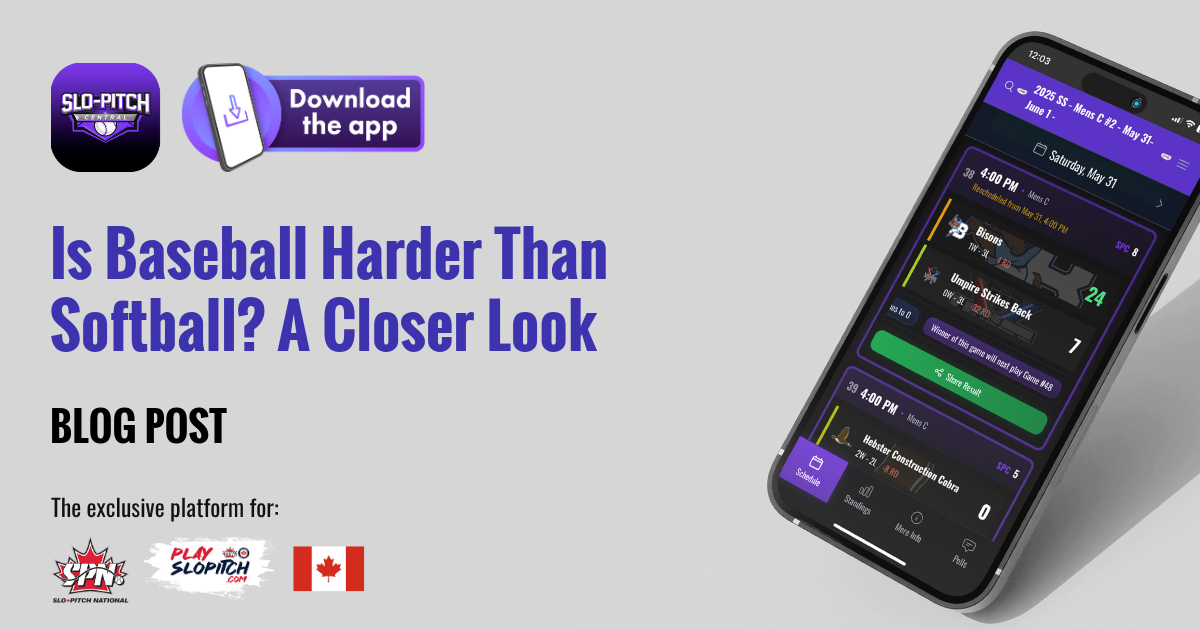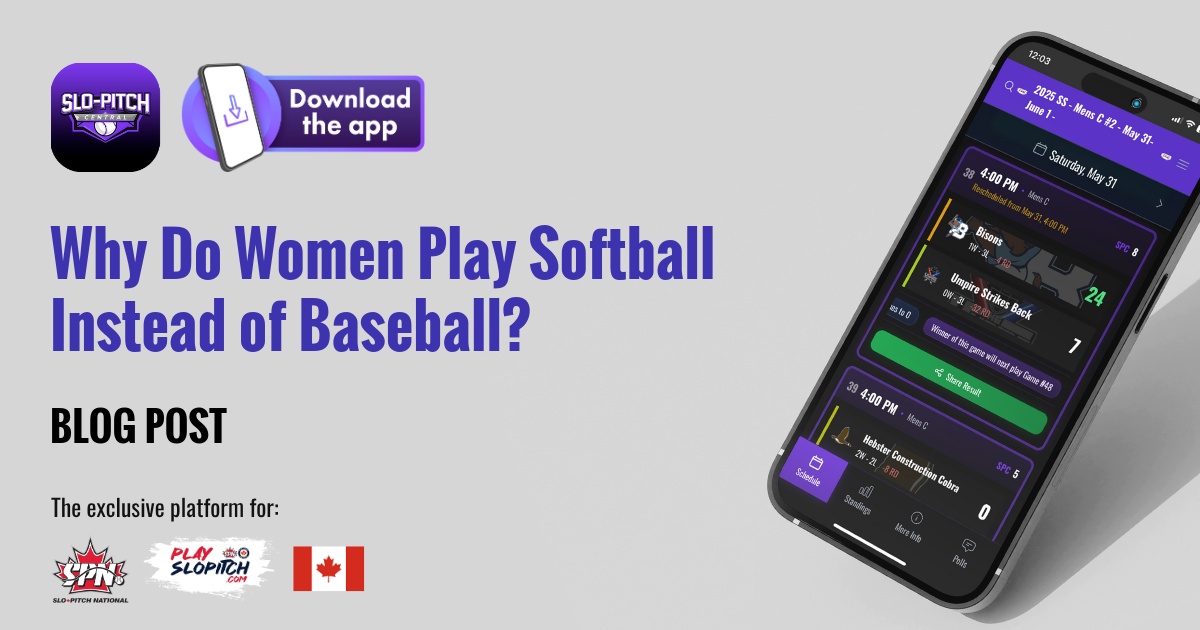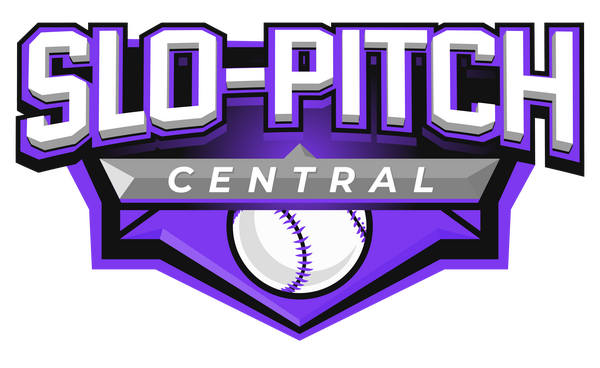Softball is played in two main formats: fastpitch and slowpitch. While both versions share some similarities, they differ significantly in rules, gameplay, and equipment. Understanding the differences can help you choose the version that suits your interests and skill level.
1. Pitching Style
The biggest difference between fastpitch and slowpitch softball is how the ball is pitched.
- Fastpitch:
- The ball is pitched with a windmill motion, where the pitcher swings their arm in a full circle before releasing the ball.
- Pitches can reach speeds of 60-70 mph or more.
- The pitcher’s goal is to strike out the batter with speed, movement, and accuracy.
- Slowpitch:
- The ball is pitched underhand with an arc.
- The pitch must have a minimum arc of 6 feet and a maximum arc of 12 feet.
- The goal is to make the ball easy to hit, encouraging more balls in play and more fielding action.
Summary:
Fastpitch focuses on speed and precision, while slowpitch prioritizes hitting and fielding.
2. Ball Size
Both formats use softballs, but the sizes vary slightly.
- Fastpitch: Uses a 12-inch ball for adult leagues.
- Slowpitch: Also uses a 12-inch ball, but the ball is often softer and heavier than in fastpitch.
In some leagues, 11-inch balls are used in slowpitch for women or youth players.
3. Gameplay Speed and Scoring
The pace of the game and typical scores differ between fastpitch and slowpitch.
- Fastpitch:
- Games tend to be lower scoring because pitchers dominate the game.
- There are more strikeouts and fewer hits.
- The game relies heavily on strategy and skillful pitching.
- Slowpitch:
- Games are generally higher scoring because the ball is easier to hit.
- There are more balls in play and home runs.
- The game is more focused on offense and team participation.
Summary:
Fastpitch is more defensive and tactical, while slowpitch is more offensive and social.
4. Base Running and Stealing
The rules for base running are stricter in slowpitch.
- Fastpitch:
- Players can steal bases once the ball leaves the pitcher’s hand.
- Sliding is common to avoid being tagged out.
- Slowpitch:
- Stealing bases is not allowed.
- Runners must stay on the base until the ball is hit.
- Sliding is generally allowed but may be limited by league rules.
Summary:
Base running is more aggressive in fastpitch, while it’s more controlled in slowpitch.
5. Field Size and Dimensions
The field dimensions are generally the same for both versions, but slowpitch fields sometimes have larger boundaries.
- Fastpitch:
- The pitching distance is usually 43 feet for women and 46 feet for men.
- Base paths are typically 60 feet.
- Slowpitch:
- The pitching distance is usually 50 feet.
- Base paths are also 60 feet, but some recreational leagues use larger outfields to accommodate more hits.
Summary:
Slowpitch may have larger fields, but the base paths and pitcher’s mound are generally the same.
6. Bats
The type of bat used can also vary.
- Fastpitch:
- Bats are typically lighter and shorter to allow for quick swings.
- They are made from composite materials or aluminum.
- Bats must meet league regulations for length and weight.
- Slowpitch:
- Bats are typically longer and heavier to generate power for hitting larger, softer balls.
- They are also made from composite materials or aluminum.
- Bats must be certified by organizations like ASA, USSSA, or NSA.
Summary:
Fastpitch bats are lighter and shorter for quick swings, while slowpitch bats are heavier for more power.
7. Team Size and Positions
Both formats follow similar rules for team size, but some slowpitch leagues allow more players on the field.
- Fastpitch: Teams generally have nine players on the field.
- Slowpitch: Teams typically have 10 players on the field, with an extra outfielder.
Summary:
Slowpitch teams usually have an extra defensive player.
8. Popularity and Who Plays
The two formats attract different types of players and leagues.
- Fastpitch:
- More popular in youth leagues, high school, college, and professional leagues.
- Requires more practice and skill development.
- Played at a higher competitive level.
- Slowpitch:
- More popular in recreational leagues for adults.
- Focuses more on fun and socializing.
- Easier to learn and play casually.
Summary:
Fastpitch is more competitive, while slowpitch is more recreational and social.
Which Version Should You Play?
- Play Fastpitch if you prefer a more competitive, fast-paced game that emphasizes pitching, strategy, and skill development.
- Play Slowpitch if you want a more relaxed, social game that focuses on hitting and having fun with friends.
Both formats are enjoyable, but the right choice depends on what you’re looking for in a game. Whether you want to compete at a high level or just have fun with friends, softball has something for everyone!





